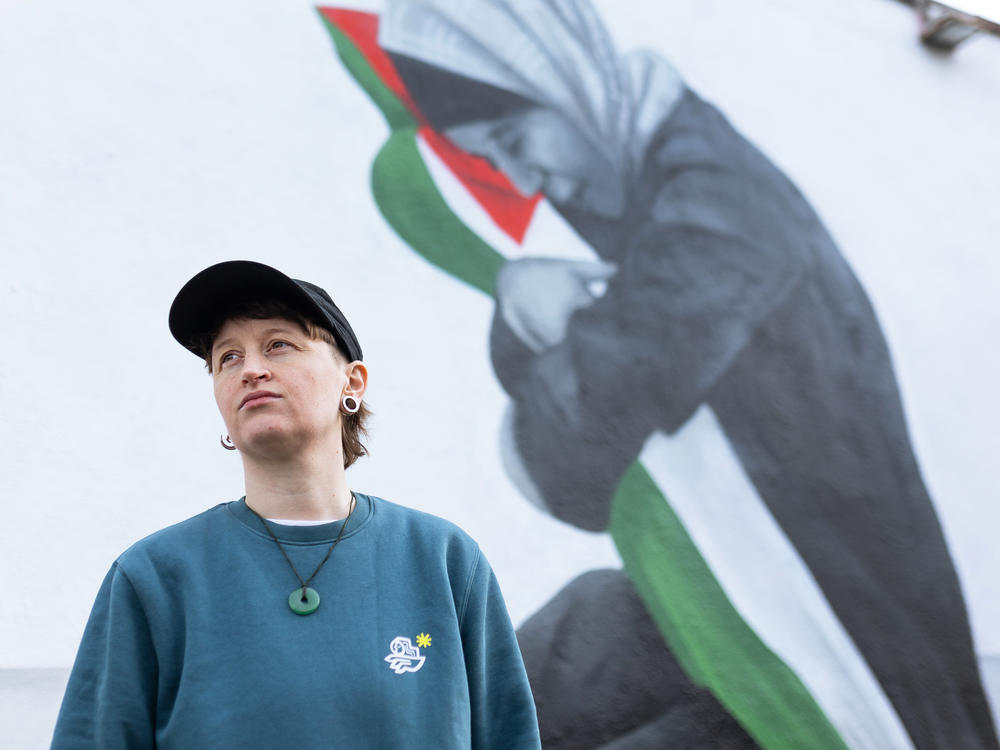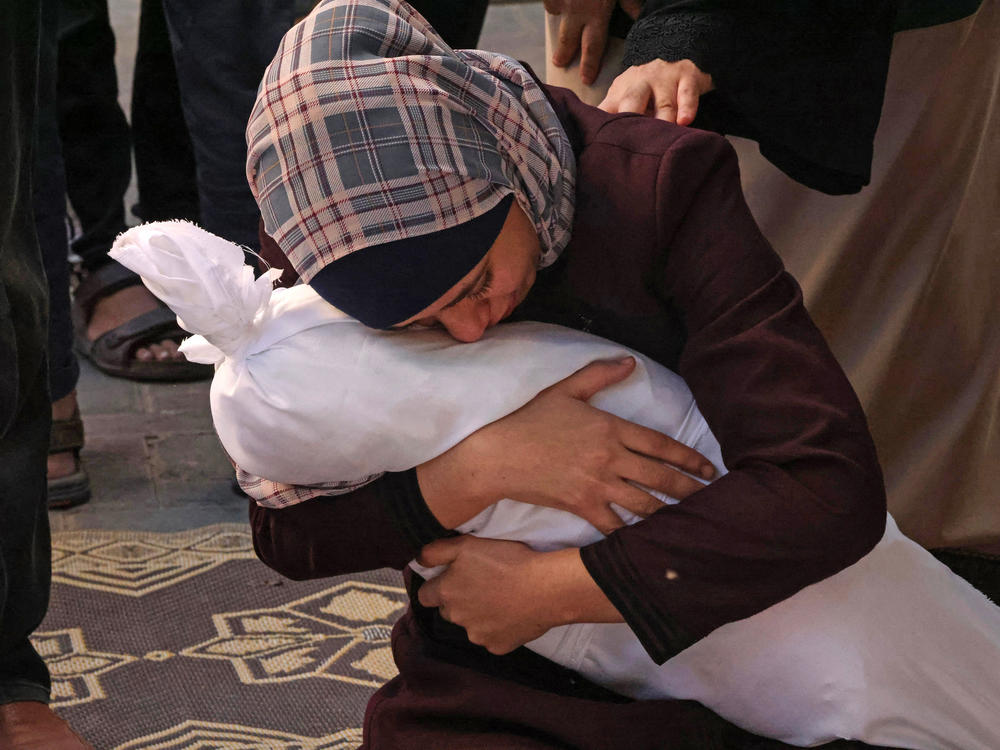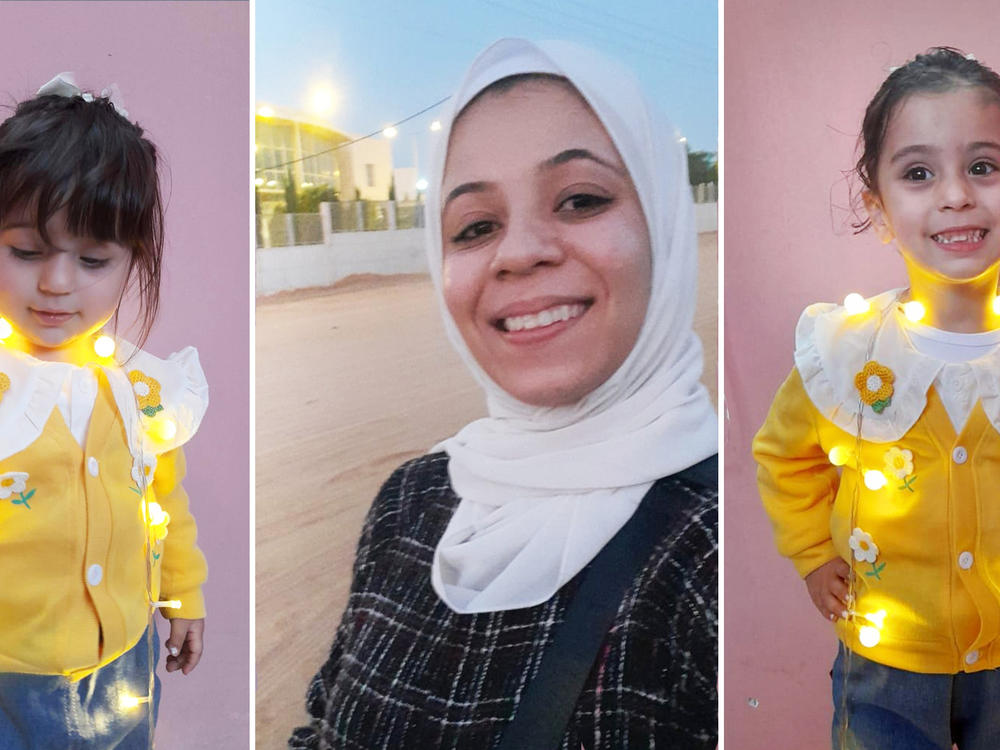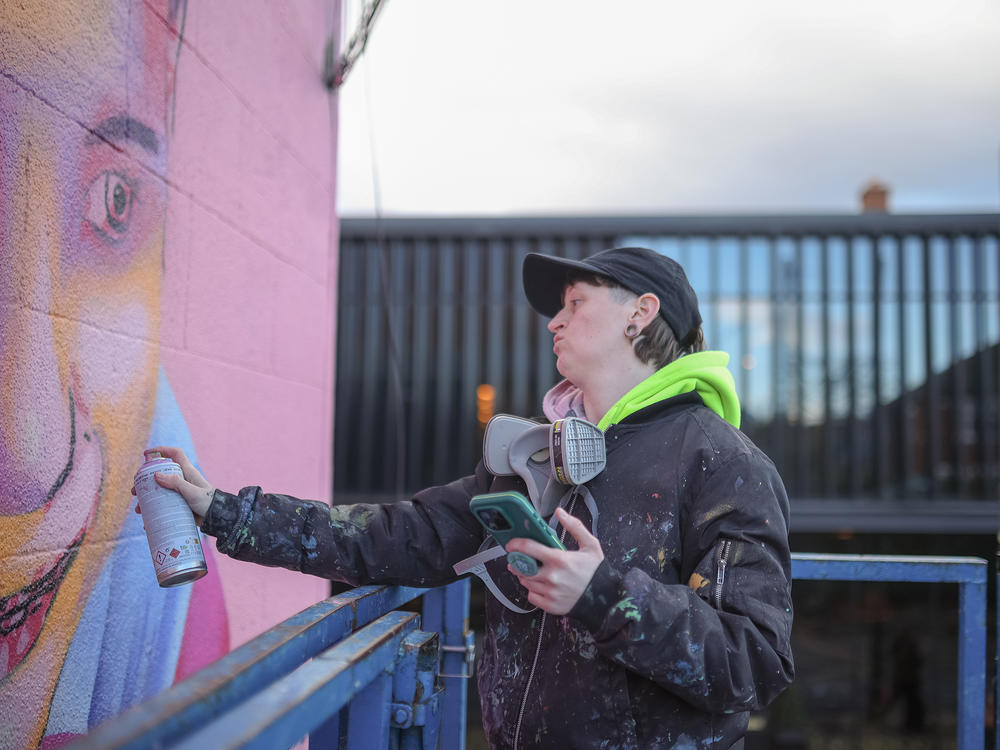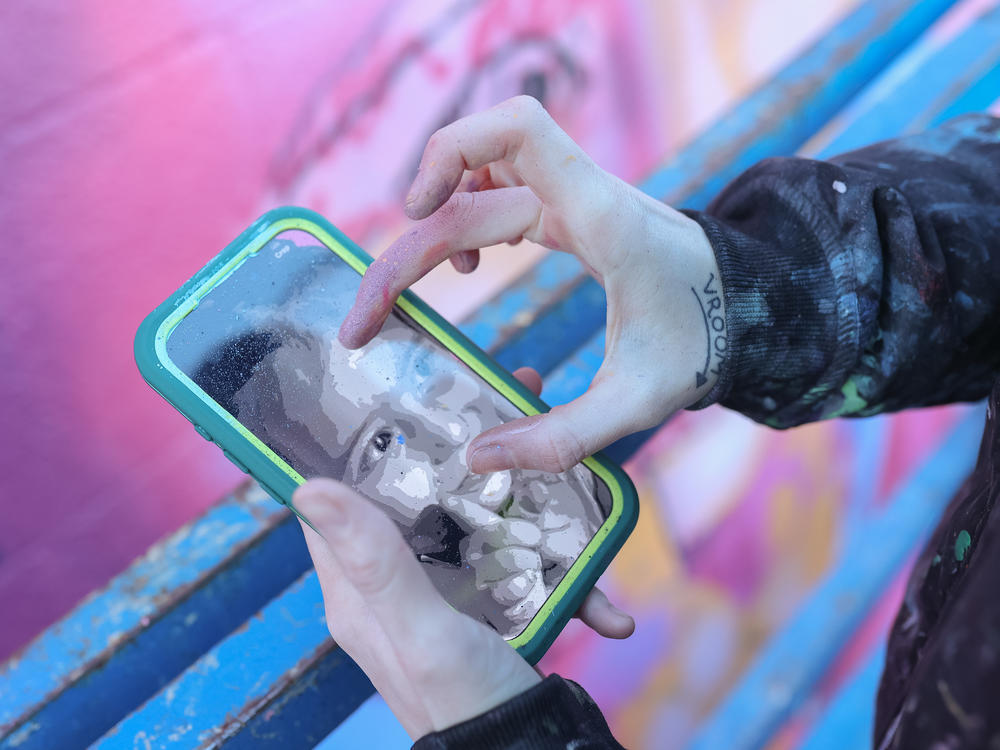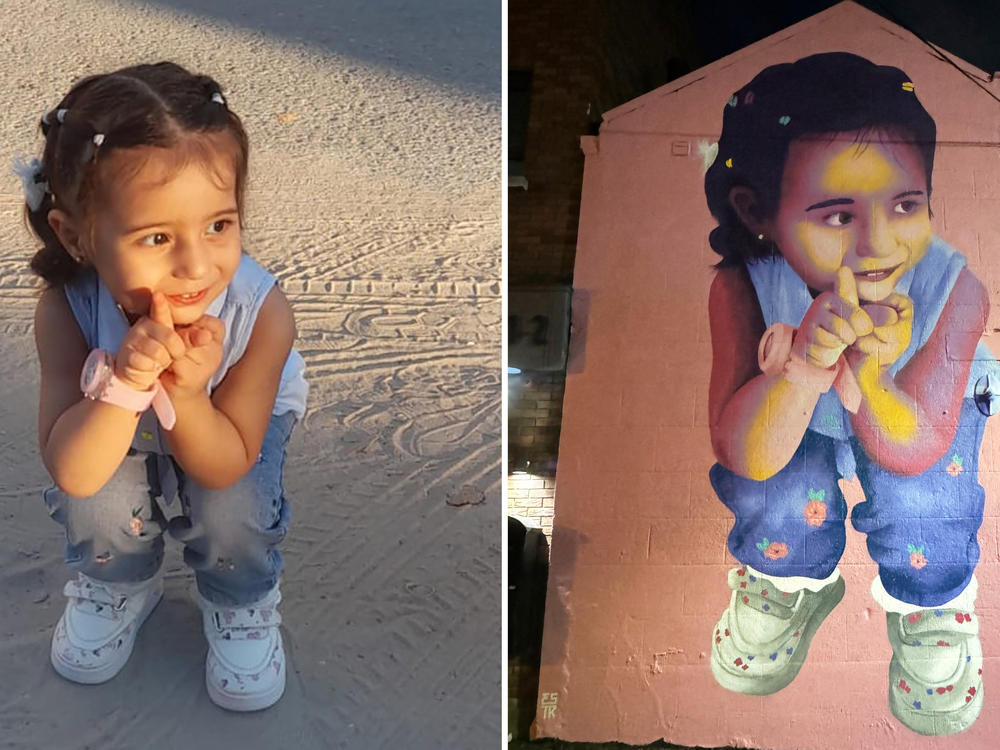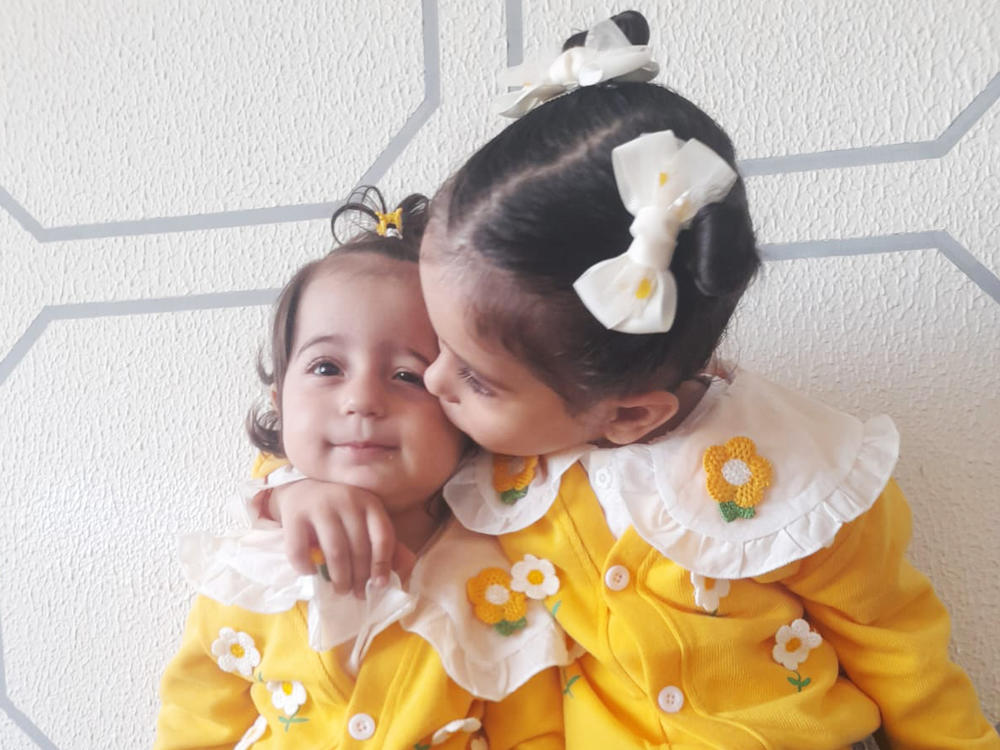Section Branding
Header Content
A grieving Palestinian, an Irish artist and the mural that brought them together
Primary Content
DUBLIN — This is a story about war, art and the power of social media to bring strangers together.
It begins with a news photo.
In late October, a photo from the Gaza Strip went out on international news wires showing a Palestinian woman kneeling and cradling the dead body of a small child wrapped in a white shroud.
Among those around the world who saw the photo was Emmalene Blake, a teacher, activist and artist in Ireland's capital, Dublin. Her street murals typically focus on human rights, equality and social issues. She has painted giant outdoor portraits of George Floyd and the singer Lizzo, as well as murals in support of same-sex marriage, COVID-19 safety and World Down Syndrome Day.
Since Oct. 7, she has focused her art on the war in Gaza, including what's become her most famous mural — inspired by that news photo. In early November, on the outer wall of a pub in Dublin, Blake spray-painted a reimagined scene of the woman, with a Palestinian flag as the child's death shroud.
Photos of it went viral on social media. So much so that a few days later, she got an Instagram direct message from Gaza.
It was from Samia al-Atrash, the woman in the photo. She's still alive, in her hometown of Rafah, in southern Gaza — where more than a million internally displaced people from across the territory have sought refuge.
"I was happy so many people had seen the mural, and I got in touch with Emma to tell her, 'That's me in the photo,' " al-Atrash, 26, tells NPR by phone from Rafah.
A long-distance friendship forms from Gaza to Dublin
Al-Atrash works as a freelance journalist in Gaza, and is currently staying in Rafah with her brother and grandmother — the only relatives she has left.
In that first exchange over Instagram, she told Blake that the child in the photo was her 2-year-old niece Masa. "You painted me and my sweet niece Masa," al-Atrash recalls telling Blake.
The whole family was killed in an Israeli airstrike on their home in Rafah on Oct. 21: Masa Khader, her 4-year-old sister Lina, and their parents Loay Khader and Samar al-Atrash. The girls' mother was Samia's sister.
"They're not numbers. They're real people, who deserved to live. They had beautiful dreams and a beautiful, safe home," al-Atrash says. "My nieces would come to my house every week. Masa would wake me up in bed and say, 'Auntie, wake up! Let's have breakfast.' Those are beautiful memories for me."
These were the happy memories she wanted Blake to know about.
"They were Samia's world. They were everything that Samia has," Blake, 36, recalls al-Atrash telling her.
Al-Atrash says she wanted to make sure Blake learned about her 4-year-old niece as well.
"I'd wanted to hold Lina too that day, when the photo was taken," al-Atrash recalls. "But she was in pieces. So I couldn't hug her."
Blake went online and ordered prepaid cellphone service for al-Atrash so that they could keep in touch. They talk daily now. They exchange voice memos over WhatsApp.
"She's a beautiful person. Our friendship has helped distract me from my pain," al-Atrash says.
"I can't even begin to comprehend what she's going through," Blake says.
A new mural in Dublin, and a poem
The two women have started fundraising for Gaza together. They're selling prints of Blake's mural and donating the proceeds to UNRWA, the United Nations' Palestinian relief agency.
Their friendship has also inspired Blake to paint a new mural.
"I told Samia that I wanted to paint Masa as she should be remembered, and not as the image that the whole world has seen of her," she explains.
On Feb. 12, after four days of spray-painting, Blake finished her latest work: a two-story-high painting of a giggling toddler, on a backdrop of pink — one of Masa's favorite colors. It covers the entire outer cinder block wall of a Dublin tattoo parlor.
It looks like any other laughing little girl. Only if passersby use their phone to scan a QR code that Blake has painted in the corner of the mural will they learn about Masa, a little girl from Gaza.
The QR code also takes you to a poem Blake has written to accompany the artwork.
"It's called 'Second Time Painting You,' and it's just about all of the things that I didn't know the first time I painted Masa," Blake explains. "Because I didn't see a photograph of her. It was a photograph of her wrapped in cloth."
Second Time Painting You
By Emmalene Blake
That cheeky smile. I sketch it now. One finger to your lips.
You look off to the side smiling at someone, something, that makes you feel happy, makes you feel safe.
I sketch your runners, white with a floral pattern. They match your light denim jeans, embroidered with delicate flowers. Your mother took the time to pick them out, match them up.
She carefully brushed your hair, pulled it into colorful bobbins. Put on your baby pink watch, so that you could see all the time you had. Or maybe to just hear the tick-tock of the seconds passing.
Two-year-olds don't worry about time.
I didn't know this about you when I painted you before. Didn't see it. Didn't see your smile. Didn't see the feather in your hair. Didn't see your flowery runners that match your flowery jeans. Didn't see the baby hairs all along your forehead that you had yet to grow out.
See, when I painted you before, you were wrapped in cloth, your auntie clutching your shrouded body, rocking back and forth.
Whispering words meant only for you.
In the coming weeks, Blake plans a third mural — this time, of Masa with her sister Lina.
"I asked Emma to paint them together, because I wasn't able to say goodbye to Lina like I said goodbye to Masa," al-Atrash tells NPR. "I asked her to paint them together, somewhere where everyone can see them."
